With the first meso cycle (10 x 50 minutes lessons) of the new scheme of learning completed, this is what I have learnt / been reminded of this term after assessing my Year 9 students first ‘control-conditions’ writing burst.
The three for this trefoil: Reaffirming expectations, setting up the class and the exercise books, (sharing the ‘Big Ideas’ and rationale for what we are learning) is on-going and a worthwhile investment. Knowledge underpinning thinking and success preceding motivation. Success-motivation takes time to transfer into confident writing.
Expectations and exercise books
Setting and reaffirming, and reaffirming again, expectations is inexorable and well worth it in the long run.
Exemplary exercise books
Front cover – I take the time to show the students how to present their front cover, inside front and back cover- explicitly. Class name is most the prominent information, as all groups have the same colour books and I am nomadic, chopping and changing book-boxes lesson by lesson.
Inside front cover – overview of the text, similar to a book blurb, sharing the big ideas and signposting the exciting topics we will be encountering. First page – An ‘S-plan’ with the six meso cycles of learning unpacked (Understanding, Exploring and Applying) that link to the Writing Bursts (interim and final assessments) written by the curriculum team.
Back cover and inside page – is a ‘Knowledge Organiser.’ Now on version two, the students are familiar with it and I am relatively happy with the content and the layout.
Overview statement. Characters. Events (Introduction, Rising Actions, Climax, Falling Action, Resolution). Context. Author. As this Shakespeare, I have included an outline of Elizabethan theatres and productions, and the content of the play itself.
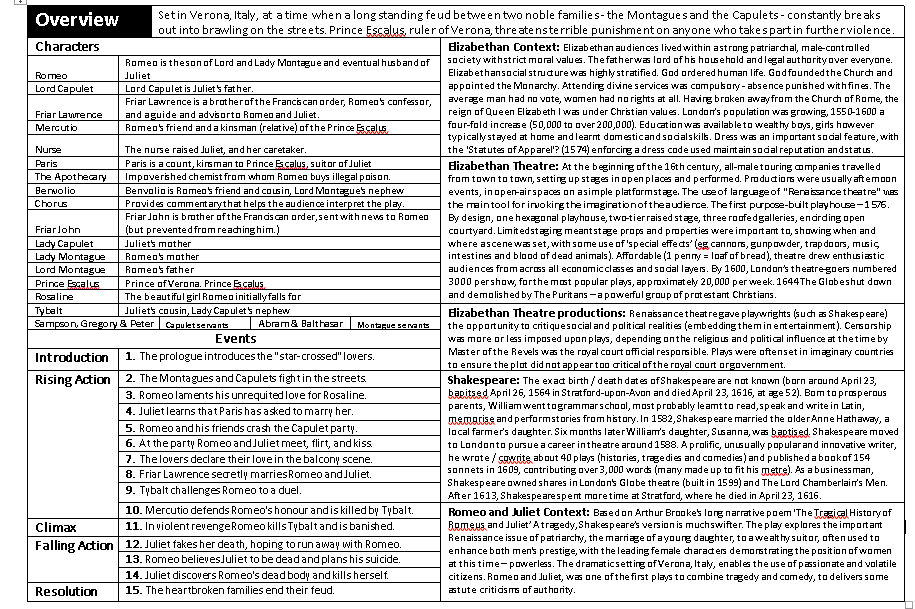
The second page – the linguistic and literary techniques we expect to encounter (this may need refining) taken from a bank of 125. Structural techniques. Symbols, motifs and themes (terms defined in the vocabulary list). In the bottom right hand corner is a QR code to resources supporting the unit (place your camera over the square to check these out yourself).
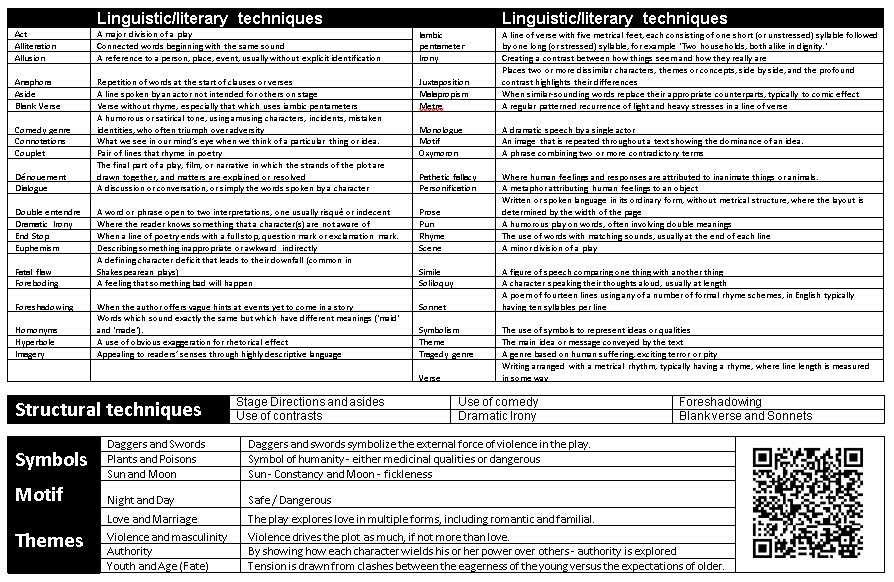
Lastly, we have a deck of challenging words by Act. This is provided for each unit.
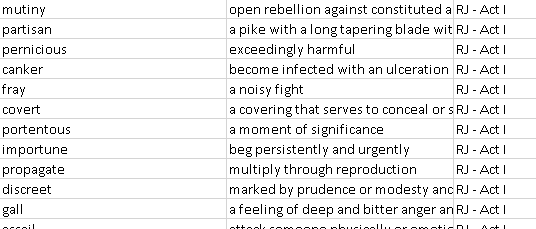
The exercise books are a physical resource. Signposting learning, with the KO used (almost) every lesson to build learning. For me personally, exercise books are an insight to the student’s attitudes towards their learning. The exercise books then becomes their revision guide, well, that is aim. Reaffirming this process, I was reminded of Ron Berger, the soft messaging associated with promoting exemplary book work. As a teacher, a first class exercise-revision book has the potential to be ‘beautiful’ and ‘powerful.’
Knowledge underpinning thinking and success preceding motivation
Identifying and building knowledge and vocabulary enables students to think about the big ideas. It is the reason I invest my time in creating the knowledge organiser. In the first instance for my own professional knowledge, then the students. I have been exploring the exposition that knowledge underpins thinking and teachers building a culture of thinking, for sometime now, with the forethought that success (knowing more) preceding motivation. The more students know, the more they want to know.
The second term / unit, provides the opportunity to revisit previous learning connect with it, current teaching. This is doubly powerful. First it “proves” the teaching approach, “Remember when you grappled with the themes of A Christmas Carol and connected those Dickensian clues.” Second it accelerates it. Using previous learning to affirm current practice, and build and connect new knowledge, is a key component of the way I teach. Now in my second term, being able to make explicit connections is such a springboard: revisiting literary terms such as foreboding and foreshadowing; prompting their use of ‘What-How-Why’ (W-H-W); introducing themes much earlier in the text (knowing, students know how important they will become). Even done to reinforcing routines: reminding students of their ‘CTL’ criteria to reinforce behaviour expectations; handing out and returning exercise books in lessons to promotes classroom culture or realise time for more learning in class.
Further to the knowledge shared the physical Knowledge Organiser, I prepare key questions (tagged by Act and Scene / chapter) to tackle and explicitly address the learning identified in the full scheme of learning, taught in lessons and assessed by the writing bursts. (Here I should recognise the input of my colleagues: For sharing the “complete a textual reference question style,” a big hit with Y9 boys; for proof reading the road testing the question bank; for the almost daily debate on Shakespeare and the loan of Shakespeare’s Restless World.) These questions are delivered at the start of class, used to share knowledge (priming) and then revisited as low-stakes quizzes each lesson to consolidate learning. Lastly, as the BIG Quiz at the end of term.
I use banks of eight or six questions dependent of the lesson, what needs to be taught, the group, the time of the day… for example, if I am checking homework, the lesson is already shortened and I tend to use six questions. Every quiz reminds the students of homework, equipment and books standards.
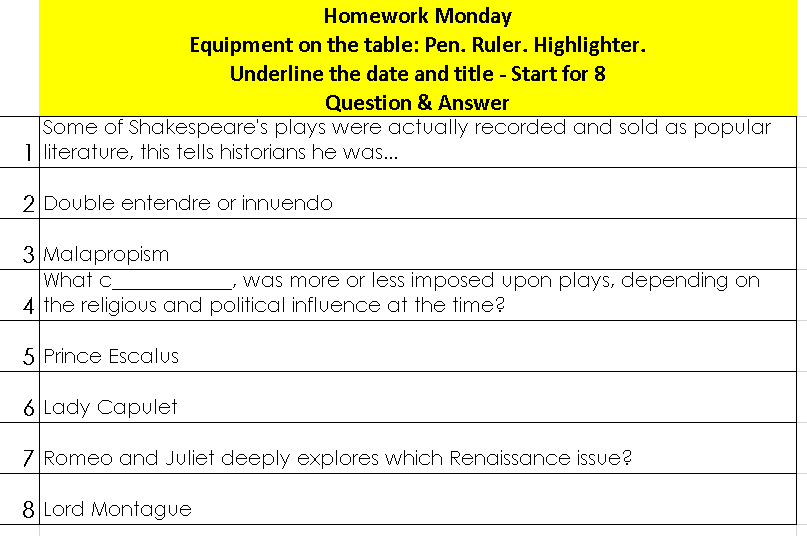
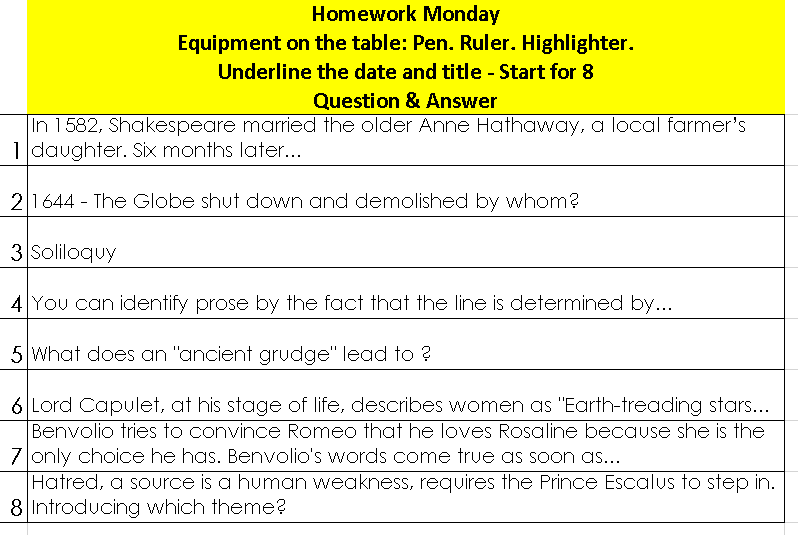
In my experience, anecdotally, I get the impression that students in my classes are very self aware of their broadening and deepening knowledge. Evidence for this comes from their verbal responses in class, particularly when using new terminology and particularly when completing character quotations. It is also most definitely seeping into their writing bursts, and tends to flood in around the third writing burst.
Writing Burst reflections
After making 50+ Year 9 mixed attainment student’s exercise books Friday, this is what I learnt about my teaching – I won’t be sharing the brief notes I made about each individual student.
Fewer students still need support with planning the structure of their extended response. Even fewer still, need support with the structure of their paragraphs or W-H-W responses. The very vast majority of students are using textual evidence to support their response. Of 100+ paragraphs assessed 90+ attempted W-H-W paragraphing. In the strongest examples, student’s used multiple textual references, some identified the literary technique or impact of the technique and a few students “dug deep” on a single word eg “master.” Of the students who did not apply W-H-W in either paragraph, English is an additional language. A number of the EAL students did applied W-H-W.
Despite being so early in the unit, having emphasised the “themes, symbols and motifs’ students are already alluding to the ‘Colour Green’ (envy), Love, Betrayal, Honour,’ with a few highlighting ‘Animals and Demons,’ and ‘Darkness and Light’ (both racially and with reference to Iago’s deceitfulness). This has happened earlier this unit than in the previous unit.
Interestingly, where students have been successful in grappling with and applying themes with in the play in their responses, these students were also able to discern and explore the different perspectives of contemporary and Elizabethan audiences. Notable, yes. One possible reason is that both are conceptually, relatively abstract. It is just a hypothesis right now.
What is really powerful, is that I now have class student exemplars to showcase strong, bold, perceptive analysis, by students, with students on Monday. I plan to inform students (rather than ask) that I plan to use their work – “It is just that good.” to gauge their response to the suggestion. Then students will be making corrections (dot and circle) or redrafting a selected paragraph, or coaching a peer student (EAL / W-H-W). A small handful of students will be borrowing a ruler to tidy up their exercise books. Only their best work…
For all those new to teaching, for all those teachers having joined a new school in September, I say “Back you high expectations for all students, affirm those ambitions, notice when they are met, and stay with those routines.” Next meso-cycle, moving forwards, here we go again. Another meso-cycle of improvement expected.
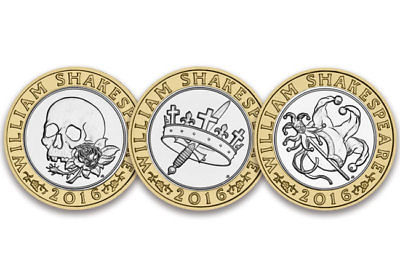
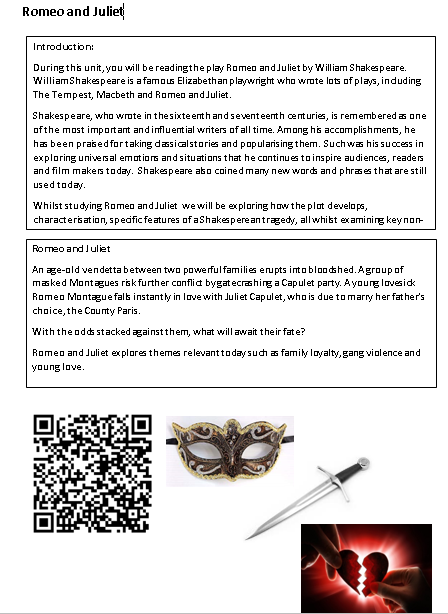
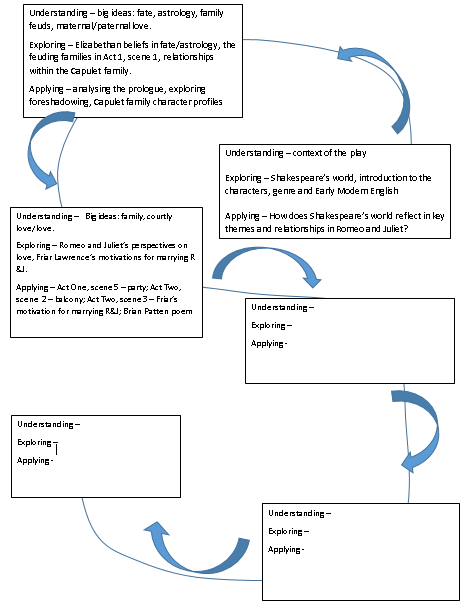


Pingback: 100 questions, set, answered and marked in a lesson – Kristian Still
Pingback: 100 questions, set, answered and marked in a lesson – Edventures